If you're not going for it in today's MLB environment, you're -- well, let's not say "tanking" and go with "developing." Teams that build from their farm system through the draft, the international market and trades of veterans for prospects keep reaching and winning the World Series.
The Kansas City Royals had the No. 1 farm system in baseball in 2011 and won two pennants, including a World Series championship in 2015. The Chicago Cubs hit the top five in 2013, ranked No. 1 in 2015 and won the World Series in 2016. The Houston Astros had the No. 1 farm system in baseball in 2014 and won their first title in 2017. The Boston Red Sox just won a World Series with homegrown former top-100 prospects at all three outfield spots, third base and shortstop and used three other top-100 prospects to trade for Chris Sale and Craig Kimbrel.
I don't think any of this is a big coincidence: Teams can't buy championships. They can buy a player or two to finish off a good roster, but the bulk of a pennant-winning roster comes from within, either through cheaper players the team developed from its farm system or veterans acquired by trading such prospects. Winning the farm system rankings can feel a bit like winning the offseason. It doesn't guarantee success -- now or in the long run -- but it's better to start with a whole boatload of young talent in your organization when you're building toward a championship run.
This year's prospect rankings package begins with the first half of my ranking of the top 100 prospects in the minors. For Nos. 50-1 click here.
Editor's note: Age is the player's age as of July 1, 2019. Players with experience in foreign major leagues are ineligible and players who have lost Rookie of the Year eligibility (more than 130 at-bats, 50 innings or 45 days on the active 25-man roster) do not count toward these rankings.
 51. Bryse Wilson, RHP, Atlanta Braves
51. Bryse Wilson, RHP, Atlanta Braves
Age: 21 (12/20/97)
Bats: R | Throws: R
6-foot-1 | 225 pounds
Top level: MLB | 2018 rank: 68
Wilson was Atlanta's fourth-round pick in its huge 2016 draft, which also netted Ian Anderson, Joey Wentz and Kyle Muller, and Wilson raced past all of them to make his major league debut in 2018. Wilson has the best overall fastball in Atlanta's system, with the pitch sitting at 95 to 96 mph and playing up with spin and life, and he has enough of a changeup to keep hitters honest, although he could use more repetitions with it to sell the pitch better. His slider is the weak spot; if that pitch were better, he would be a top-20 prospect, but right now it's a fringy pitch and he needs to throw it more, in the minors, before he's ready to step into a major league rotation.
He's still young, having just turned 21 in December, and already has come a long way since he was an athletic kid with a bad delivery and some arm strength just three springs ago. His aptitude for making adjustments and competitive nature bode well for him getting the secondary stuff to the point where he's at least a No. 3 starter.
 52. Spencer Howard, RHP, Philadelphia Phillies
52. Spencer Howard, RHP, Philadelphia Phillies
Age: 22 (7/28/96)
Bats: R | Throws: R
6-foot-3 | 205 pounds
Top level: A-ball | 2018 rank: Unranked
Howard was the Phillies' second-round pick in 2017, the 45th overall selection, but he has blown past almost everyone in their system to become their No. 2 prospect, even passing their 2017 first-rounder, Adam Haseley. Howard started the year with an average to above-average fastball but by midyear was sitting at 95 to 96 mph and topped out at over 98 mph at the end of the year. And his fastball really plays, because hitters don't see it well. He has a full arsenal with a plus slider that he calls a cutter as well as a solid-average changeup that he sells well out of his hand.
He was effective all year but improved as the season went on, with a 35 percent strikeout rate across his last 11 starts, roughly half his season. Howard spent all of last year in Low-A, which is a peculiar decision given how advanced he looked, how well he pitched and his experience as a college pitcher. So, the Phillies might consider bumping him to Double-A quickly, since he's already 22 and it's not as if we're waiting on him to throw harder. I hear a lot of No. 2 starter upside on him, with a high floor, and if he's throwing that hard that often, he should be able to get to the high minors soon.
 53. Daniel Lynch, LHP, Kansas City Royals
53. Daniel Lynch, LHP, Kansas City Royals
Age: 22 (11/17/96)
Bats: L | Throws: L
6-foot-6 | 190 pounds
Top level: A-ball | 2018 rank: Ineligible
Lynch came into last spring at the University of Virginia as a potential third- to fifth-round pick, a lefty with some feel to pitch but mostly average stuff and a question or two about his durability due to an old back injury. He finished the spring bumping 97 mph among a major-league-ready four-pitch mix, ending up at No. 26 on my draft board and going at pick No. 34 overall to the Royals, who have to be beyond thrilled with the results so far. Lynch pitched a full summer after signing, very unusual in this era of extreme caution around pitcher workloads, but he kept throwing better as the season progressed, dominating the full-season Sally League in nine starts -- 40 innings, 47 Ks, six walks and a 1.58 ERA.
Lynch really took off in pro ball once he was able to call his own game more, with his fastball sitting at 94 to 95 mph in many starts to go with an above-average slider and changeup and good deception from his delivery. He's still a little projectable, although his 6-foot-5 frame is wiry and he probably is not going to end up with a 240-pound workhorse body. But even if he's just a 180-inning guy, he has the command and stuff to be in a big league rotation very soon. Pro scouts who saw him in the Appy or Sally leagues all had the same question: How did this guy not go higher in the draft than the supplemental round? I think the whole industry will be asking that by the end of 2019.
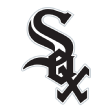 54. Luis Robert, CF, Chicago White Sox
54. Luis Robert, CF, Chicago White Sox
Age: 21 (8/3/97)
Bats: R | Throws: R
6-foot-3 | 185 pounds
Top level: High-A | 2018 rank: 46
Robert signed one of the last unfettered deals before the latest CBA put restrictions on international free agents under the age of 25, netting $26 million from the White Sox in May 2017 and making his stateside debut this past season. His campaign didn't go as planned, however, as Robert suffered a thumb injury in spring training that kept coming back, limiting him to just 50 games during the regular season and knocking him out for another week in the Arizona Fall League.
He is an impressive athlete with several plus tools, including 70-grade speed and plus raw power, and he reminded me physically of a young Jermaine Dye when I saw him take BP. (It has been a running joke with my Twitter followers that I haven't seen Robert play a game; I've gone somewhere to see his team four times, only to have him get hurt every time and miss the entire length of my trip.)
He is still raw at the plate and likes to expand the zone, with some mechanical issues in his swing that look like they'll contribute to more swings-and-misses than you'd like. He has star-level tools if he gets to them, which will require staying healthy and getting a full year of at-bats, but the potential for plus defense in center and even just mistake power should give him a high probability to be a solid everyday player.
 55. Khalil Lee, CF, Kansas City Royals
55. Khalil Lee, CF, Kansas City Royals
Age: 21 (6/26/98)
Bats: L | Throws: L
5-foot-10 | 170 pounds
Top level: Double-A | 2018 rank: Unranked
Lee was the Royals' third-round pick in 2016 out of a prep school in northern Virginia. He had a strange full-season debut in 2017; he punched out 171 times (the ninth-highest total in the minors that year) but drew 65 walks and showed some power and above-average defense in center, with speed he didn't know how to utilize (20 steals in 38 attempts). In 2018, however, he showed tremendous growth on all sides of the ball, including a better two-strike approach that saw him cut his strikeout rate from nearly a third to just under a quarter of his plate appearances, although the change cost him some of his game power.
Lee has strong hands for hard contact, but his swing can still get big, and he rolls his front leg sometimes through contact, resulting in too many rollovers to the second baseman. He improved on the bases last year, especially in center field, where he always had a plus arm and enough speed to stay there but showed better reads and routes in 2018. There's some fourth-outfielder potential here, depending on how his body develops and whether his game power returns, but he also could be an above-average regular or more who goes 15/15 in steals and homers, with an OBP in the high .300s and value on defense in center.
 56. Luis Urias, 2B/SS, San Diego Padres
56. Luis Urias, 2B/SS, San Diego Padres
Age: 22 (6/3/97)
Bats: R | Throws: R
5-foot-9 | 185 pounds
Top level: MLB | 2018 rank: 38
Urias is listed at 5-foot-9 -- I'd take the under on that height -- but he has an impressive track record of hitting for average and high contact rates at every level of the minors. Urias' swing is compact, of course, but not so short that he can't drive the ball to the gaps. And his strike zone awareness has always been exceptional; he had more walks than strikeouts as a pro before he reached Triple-A in 2018. Urias reached the majors in September for a cup of coffee that ended early when he pulled a hamstring, an injury that has lingered into the offseason and prevented him from playing winter ball.
The brief sample did expose some weaknesses in his approach, as right-handed pitchers had success by attacking him with fastballs up and breaking stuff down and/or away, getting him to expand the zone more than he did in the minors. Urias has played plenty of shortstop in pro ball, but he's not a good enough defender there to play it every day. If his bat plays as expected, with high averages and OBPs, he'll be a regular at second base with above-average or even plus defense. There's a high utility infielder floor here too, given his positional versatility and ability to make contact; but the Padres are certainly hoping for more, given Urias' history of performance throughout the minors.
 57. Mike Soroka, RHP, Atlanta Braves
57. Mike Soroka, RHP, Atlanta Braves
Age: 21 (8/4/97)
Bats: R | Throws: R
6-foot-5 | 225 pounds
Top level: MLB | 2018 rank: 60
Soroka's major league debut was tantalizing, as his stuff, already good, was moving like crazy with a little help from the goofy major league ball, but five starts into his rookie season, his shoulder barked and he was shut down until instructional league. He is supposed to be 100 percent now and ready for spring training, which would be very good news for the Braves as they try to repeat as division champions. Soroka was throwing up to 95 mph with huge life on his two-seamer, also showing a plus changeup and sweepy slider that played up against right-handers because of his low arm slot.
He has filled out very well since Atlanta drafted him as a physically immature 17-year-old in 2015, and he hadn't had any arm issues until last year, even though he has that low slot and an arm swing that puts some stress on the shoulder. If he's healthy, he has mid-rotation potential, held back a little by the lack of a better breaking ball for right-handers but boosted by the potential to get a lot of ground balls with that crazy two-seam life.
 58. Justin Dunn, RHP, Seattle Mariners
58. Justin Dunn, RHP, Seattle Mariners
Age: 23 (9/22/95)
Bats: R | Throws: R
6-foot-2 | 185 pounds
Top level: Double-A | 2018 rank: Unranked
The "other" prospect who went to the Mariners in the Robinson Cano/Edwin Diaz deal is a solid player in his own right, a former first-rounder who got too caught up in spin rate in 2017 but bounced back with a huge 2018. Dunn was a reliever at Boston College until early in his junior year, when his velocity spiked and the Eagles' staff put him in the rotation. He is extremely athletic, but he was still somewhat raw for a college pitcher when the Mets drafted him; it took until 2018 to get him to a delivery he could repeat well, one that also gave him more extension out toward the plate to improve the carry on his mid-90s fastball and the finish on his slider.
The fastball alone plays right now, and both his slider and curveball can show plus, with the changeup the one pitch that's behind, in large part because he seldom had to use it as an amateur. I know of one opposing Double-A manager who said Dunn was the best pitcher his team had faced in all of 2018. He has more volatility in his projections, because he hasn't pitched a ton and still has work to do with his repertoire and command; but he has at least No. 2 starter upside, and you could squint hard and see even more if you truly believe in his athleticism and aptitude.
 59. Vidal Brujan, 2B, Tampa Bay Rays
59. Vidal Brujan, 2B, Tampa Bay Rays
Age: 21 (2/9/98)
Bats: S | Throws: R
5-foot-9 | 155 pounds
Top level: High-A | 2018 rank: Unranked
Brujan has received relatively little hype to date, in part because he's in the Rays' system, and in part because he wasn't a high draft pick or big bonus guy on the international front. But he has hit at every level, with a career line of .300/.387/.426 through age 20, including a stint in High-A, and more walks in his career than strikeouts. It's not just performance, either, as Brujan is a plus runner with average power and a solid defender at second who could end up an asset there or maybe even be a plus defender in center.
He has a compact swing that so far has put the ball on the ground too often, just over 52 percent last year; although he seems like a good candidate for the kind of swing optimization that has acquired a cultlike following around the game, given his hand and upper body strength and feel for the zone.
 60. Mark Vientos, 3B, New York Mets
60. Mark Vientos, 3B, New York Mets
Age: 19 (12/11/99)
Bats: R | Throws: R
6-foot-4 | 185 pounds
Top level: Rookie | 2018 rank: Unranked
Vientos has been a bit of a forgotten man in the Mets' system, with more highly touted prospects around him, some playing at higher levels, as well as undue attention given to a publicity stunt in their Double-A outfield last year. But trades and Vientos' own progress have him as the system's best prospect now, and he is set to spend all of 2019 in full-season ball at age 19 after a very strong summer with short-season Kingsport as a true 18-year-old. Vientos finished tied for fourth in the Appalachian League in homers, fifth in walks and tied for 11th in doubles, with a swing optimized for launch angle but that also gets the barrel into the zone for enough time to maximize his hard contact.
A poor defensive shortstop in high school, Vientos has become an adequate defender at third, still improving but also still growing into his 6-foot-4 frame, so there's some chance he has to move off the position just due to sheer size. His OBP/contact/power profile should play anywhere, with his best chance to be a star coming at third but a high probability that he will be a regular even in right field or at first base.
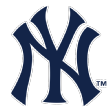 61. Deivi Garcia, RHP, New York Yankees
61. Deivi Garcia, RHP, New York Yankees
Age: 20 (5/19/99)
Bats: R | Throws: R
5-foot-10 | 163 pounds
Top level: Double-A | 2018 rank: Unranked
If Garcia were 6-foot-2, he probably would be talked about as a top-25 prospect; but he is more Marcus Stroman-sized and a bit slighter of build, so he has been dogged by questions about his durability, even as he dominated both levels of A-ball. Garcia has an easy low-90s fastball that sits 92 to 94 mph and sneaks up on hitters, while his bread and butter is his hammer curveball that's at least a 60-grade pitch now and could be more.
Scouts love his competitiveness, and even though he is small, he is aggressive and attacks hitters in the zone. When the Yankees promoted him to High-A in August, he no-hit Clearwater over seven innings in his first outing, striking out six of the first seven batters he faced. His changeup is his third pitch but should be at least average.
Garcia's delivery is simple, a little heavy on the arm with a moderately short stride, but he repeats it and has no problem throwing all his pitches for strikes. No one wants to assume a 5-foot-9 right-hander is a starter, but Garcia at least looks like he is built from the same mold as guys such as Stroman and Roy Oswalt; and through age 20, Garcia has had no trouble getting batters out.
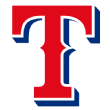 62. Leody Taveras, CF, Texas Rangers
62. Leody Taveras, CF, Texas Rangers
Age: 20 (9/8/98)
Bats: S | Throws: R
6-foot-1 | 190 pounds
Top level: High-A | 2018 rank: 45
Taveras has been a slow developer as compared to the other kids from his July 2 class, two of whom now sit atop these rankings. But that's not a fair comparison, and Taveras has progressed very quickly for a teenager who has been promoted aggressively to High-A. He always has had a good approach for a teenager, with strong bat-to-ball skills. His strikeout rate was well above (better than) league average, even though he was the second-youngest regular in the Carolina League. His swing doesn't have much loft to it, and he's going to be a fringy power guy unless he alters his swing path at some point.
Taveras is a 70-grade defender in center with plus speed and an above-average arm, with his defense playing up thanks to strong instincts. Of course, at some point Taveras has to put together the season everyone has been anticipating, converting the approach and tools into more production, although I'm optimistic that 2019 will be a breakout year for him. The defense and contact rate would make him a regular for many clubs; if and when he converts his eye and feel for the barrel into .350+ OBPs, he'll be an above-average everyday player or more.
 63. DL Hall, LHP, Baltimore Orioles
63. DL Hall, LHP, Baltimore Orioles
Age: 20 (9/19/98)
Bats: L | Throws: L
6-foot-2 | 195 pounds
Top level: A-ball | 2018 rank: Unranked
Hall was Baltimore's first-round pick in 2017, a potential top-10 talent who slipped a bit due to the bias against high school pitchers, his remote hometown and some makeup concerns. But his first full season in pro ball seems to have put most of those to the side, with scouts universally praising what they saw from him just a year out of Georgia high school ball. Hall would regularly pitch at 91 to 93 mph, touching 96, eventually running it up as high as 98 by the end of the summer, along with an above-average changeup and a curveball with big angle to it that varied from fringe-average to plus depending on when you saw him.
He is a good athlete who should develop more consistency to his delivery with repetition, while he already has the arm strength and feel both to spin the curveball and turn over the changeup that is all very hard to teach. There's some relief risk here just due to his inexperience and the need for him to develop a starter's command and pitching plan, but he has good mid-rotation upside and real value as a left-hander in an industry that still covets them.
 64. Eli Montero, 3B, St. Louis Cardinals
64. Eli Montero, 3B, St. Louis Cardinals
Age: 20 (8/17/98)
Bats: R | Throws: R
6-foot-3 | 195 pounds
Top level: High-A | 2018 rank: Unranked
Montero came a bit out of nowhere to win the Midwest League MVP at age 19 last year, thanks to a .321/.381/.529 line that earned him a late-season promotion to High-A. He is a big, very strong kid who makes a lot of hard contact, with some pull power but also a lot of doubles the other way, strong enough to take pitches on the outer third and pull some of them into the seats. He has a solid idea of the zone and feel to hit, although he has just average bat speed and succeeds more on pure strength, even when he overswings, often wrapping his bat and getting very long to try to launch something. He plays third base now, but the consensus from scouts is that he'll end up at first.
There's a good starter kit here for a No. 4 or 5 hitter, a 25- to 30-homer guy with a solid OBP but maybe not as much average as you would want from a No. 2 or 3 hitter, enough for a regular or more even at first.
 65. Matt Manning, RHP, Detroit Tigers
65. Matt Manning, RHP, Detroit Tigers
Age: 21 (1/28/98)
Bats: R | Throws: R
6-foot-6 | 190 pounds
Top level: Double-A | 2018 rank: Unranked
Manning looked like a bust in his first spring training after the Tigers took him with the ninth overall pick in 2016, as he lost the strike zone and had to be held back in extended spring training to rework his delivery. That effort paid off in 2018, as Manning looks like a new pitcher, with a better, less mechanical delivery that he can repeat well and that makes great use of his 6-foot-6 frame for huge extension out front, and better pure stuff than he had shown in the previous two summers.
Manning was a two-sport star in high school who had a basketball scholarship to Loyola Marymount and would hit 98 mph on his fastball but without great life and no feel for a breaking ball. In 2018, he would sit 92 to 95 and get more swings-and-misses on the fastball thanks to that extension, with a tighter 11/5 curveball up to 80 mph that showed above average and a changeup that is above average when he doesn't overthrow it.
Manning finished in the top 20 in the minors in total strikeouts and ended the year in Double-A, which puts him on track to see the majors in 2020, if not this year. There's still work to do, but the progress he has made in a fairly short time is a testament to his work ethic and athleticism, and there's good reason to believe he'll keep improving and get to a No. 3 starter upside.
 66. JoJo Romero, LHP, Philadelphia Phillies
66. JoJo Romero, LHP, Philadelphia Phillies
Age: 22 (9/9/96)
Bats: L | Throws: L
6-foot | 190 pounds
Top level: Double-A | 2018 rank:59
The Phillies were aggressive with Romero in 2018, pushing him to Double-A Reading, a very good hitter's park, after just 10 starts in High-A to end 2017, and he struggled for the first month with command and learning how to put away better hitters. Romero will show three above-average or better pitches, working 89 to 94 mph much of the time but able to reach back for 96 to 97 even deep into starts, while also showing a plus slider, above-average changeup and a curveball that's adequate but perhaps not needed in his arsenal. He has been a ground ball pitcher at every stop in the minors so far. He is an excellent fielder and controls the running game exceptionally well for a prospect, allowing just three stolen bases all season.
Romero's command still lags a little, and he has a tendency to spin off his front heel when he lands, which can pull him off line, even though his delivery gets him right toward the plate. His season ended in late July with a strained oblique muscle, costing him probably six or seven starts, and he'll likely need the full year in Triple-A before he is ready to come up, but there's at least No. 3 starter upside here with the chance for him to be truly plus if the command keeps improving.
 67. J.B. Bukauskas, RHP, Houston Astros
67. J.B. Bukauskas, RHP, Houston Astros
Age: 22 (10/11/96)
Bats: R | Throws: R
6-foot | 196 pounds
Top level: Double-A | 2018 rank: 74
The Astros' first-round pick in 2017 threw just 10 innings that season after signing, since he had been worked hard for three years at North Carolina, but his 2018 season was curtailed by a March car accident that led to a slipped disc and cost him two months of the regular season. When he returned, however, he was as good as ever. Bukauskas reached 99.7 mph in the Arizona Fall League, the hardest anyone had seen from him, so he appears to be fully recovered. He is a 6-foot right-hander with plus velocity and a plus slider and average changeup, showing some platoon split last year but not an alarming one, and he started working in a 90 to 91 mph cutter in the Fall League too.
Bukauskas has an aggressive, hypercompetitive style of pitching that would work well in just about any role. His delivery is not pretty, with most of the effort coming from his arm rather than his lower half, and his fastball can be flat due to his size and lack of plane. For all that, he has never had an arm injury, and he continued to miss bats and limit hard contact when he was able to pitch last year. I don't foresee him throwing 180 innings regularly, but he could be a mid-rotation starter if he holds up, and he has high upside in relief if the delivery eventually forces him out of a starter role.
 68. Daz Cameron, CF, Detroit Tigers
68. Daz Cameron, CF, Detroit Tigers
Age: 22 (1/15/97)
Bats: R | Throws: R
6-foot-2 | 195 pounds
Top level: Triple-A | 2018 rank: 86
Cameron continues to make quiet, steady progress, a strange contrast to when he was a bit overhyped as a high school prospect who suffered in comparison to his father, Mike. Cameron is an instinctive center fielder who should end up plus on defense and has enough speed to be an asset on the bases if he works on getting better reads off pitchers. Cameron isn't going to hit for the same sort of home run power his dad did, but he has plenty of gap power and goes the other way very effectively.
He is willing to run deep counts, so there should be on-base skills along with some high strikeout totals, which held true until his late-August promotion to Triple-A but resumed with a strong showing in the Arizona Fall League. His hands are loose, and he has good barrel control, just lacking much loft in his swing; but there's no mechanical reason to think he'll struggle with contact in the majors. He might only hit 12 to 15 homers, but with plus defense, a strong OBP and 20-odd steals to go with it, which would make him an above-average regular in center.
 69. Luis Garcia, SS, Philadelphia Phillies
69. Luis Garcia, SS, Philadelphia Phillies
Age: 18 (10/1/00)
Bats: S | Throws: R
5-foot-11 | 170 pounds
Top level: Rookie | 2018 rank: Unranked
The Phillies gave Garcia $2.5 million in 2017, and he has joined their pipeline of high-end international talent signed by their longtime international director, Sal Agostinelli, ripping through the Gulf Coast League last year at age 17 with a .369/.433/.488 line. He is a switch-hitting shortstop who projects to hit from both sides of the plate and stay at the position with above-average defense, with a better swing now from the right side and more tendency to chase hitting left-handed.
In the field, he already has made substantial progress from just a year in a pro system, particularly on being more consistent on routine plays, and even though he is going to end up an average runner, he projects to stay at short with above-average to plus defense. His makeup earns rave reviews from the Phillies' staff, from his maturity to his aptitude for learning -- and between that and the potential for a plus or better hit tool with high on-base skills, he could be a top-20 prospect in a year.
 70. Josh James, RHP, Houston Astros
70. Josh James, RHP, Houston Astros
Age: 26 (3/8/93)
Bats: R | Throws: R
6-foot-3 | 206 pounds
Top level: MLB | 2018 rank: Unranked
A year ago, James was barely on the prospect radar. He threw hard but was out of shape, didn't throw enough strikes or miss enough bats to be a potential starter and ended 2017 on the worst possible note -- giving up 19 runs in his last four starts in Double-A over just 8⅔ innings, while ending up in the team's doghouse for non-baseball reasons, as well. He recommitted to his career in the offseason, getting his body in much better shape, and showed up in 2018 a new pitcher, throwing harder than ever with more life and a harder slider, ending the year in the majors -- where he bumped 101 mph in his debut.
James has gone from a maybe-reliever to a likely starter, with a huge fastball that plays, a plus slider and an average changeup, and he holds his stuff deep into starts. You can dream on him pitching atop a rotation, although his command probably will keep him more in the above-average category -- but to get there from where he was 15 months ago is a heck of an achievement.
 71. Jesus Sanchez, OF, Tampa Bay Rays
71. Jesus Sanchez, OF, Tampa Bay Rays
Age: 21 (10/7/97)
Bats: L | Throws: R
6-foot-3 | 210 pounds
Top level: Double-A | 2018 rank: 34
Sanchez continued to swing at everything and hit a lot of it, generally hitting it hard, as a 20-year-old in High-A last year (with a late-summer bump to Double-A), and the Oscar Taveras comparisons that have stuck to him since his pro debut still seem to hold. Sanchez has always had a preternatural ability to hit, from when he first signed, and he posts some of the best exit velocities in the Rays' system, although his approach -- see ball, hit ball -- remains unrefined. Because he can make contact with so many pitches out of the zone, he tends to expand too easily, so he doesn't walk much and rolls over to the right side too often.
He is going to end up in right field, with a plus arm and probably average range. With his potential to hit .300 regularly with 18 to 22 homers, even with low walk rates he should be at least an everyday regular with the potential to grow into more.
 72. Cole Winn, RHP, Texas Rangers
72. Cole Winn, RHP, Texas Rangers
Age: 19 (11/25/99)
Bats: R | Throws: R
6-foot-2 | 190 pounds
Top level: Has yet to play | 2018 rank: Ineligible
Winn was the top command guy in last year's high school class, offering less projection than your typical prep arm but more polish and a more advanced feel for the craft of pitching. Winn pitched in Colorado until his senior year, when he moved to California and enrolled at Orange Lutheran; and before his senior year, he tightened up his delivery while watching his stuff creep up to above average, with fastball velocity topping out at 95 mph and also showing average command of both a curve and a slider. He has a big stride toward the plate to finish over his front side, gaining extension and extracting the most velocity he can from his lower half.
His changeup still lags his other weapons, and if he's going to work with a grade-55 fastball, his command will have to stay where we all saw it last spring for him to remain a starter; but his delivery and makeup say he can do it, with the upside of an above-average major league starter.
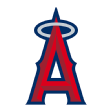 73. Brandon Marsh, OF, Los Angeles Angels
73. Brandon Marsh, OF, Los Angeles Angels
Age: 21 (12/18/97)
Bats: L | Throws: R
6-foot-4 | 210 pounds
Top level: High-A | 2018 rank: 88
Marsh started 2018 in the Midwest League, making his full-season debut at age 20. He was so good so early, hitting .295/.390/.470, that the Angels bumped him right up after 34 games to High-A, where he continued to rack up walks and display doubles power. Marsh is an exceptional athlete who shows great instincts on both sides of the ball as well as on the basepaths, with 55/60-grade speed that plays up as a result.
He is a plus defender in center both in range and arm, and his bat has so far played out for good on-base/doubles skills, with untapped power that might require a small tweak to his swing finish to unleash. His defensive chops and athleticism give him a high floor as an extra outfielder, but it's easy to see him becoming a four-win player with on-base skills and even 15 or so homers a year.
 74. Bo (Noah) Naylor, C/3B, Cleveland Indians
74. Bo (Noah) Naylor, C/3B, Cleveland Indians
Age: 19 (2/21/00)
Bats: L | Throws: R
6-foot | 195 pounds
Top level: Rookie | 2018 rank: Ineligible
Naylor was 14th on my draft board but was still available for Cleveland at pick 29, where it had to be ecstatic to land one of the draft's best position player prospects -- even though it's still not clear what position he'll play. Naylor caught and played in the infield as an amateur, and Cleveland plans to develop him as a catcher while also giving him reps at third base, with second base always a possibility down the line, to maintain some flexibility. He is a superb athlete who gets raves for his on-field intelligence, and he has real tools in a plus arm, plus speed and real feel to hit, rolling right out of the draft to post a .381 OBP in the Arizona Rookie League that would have ranked in the top 20 had he qualified.
He is a work in progress as a receiver, with plenty of arm strength and the agility for the position but lacking the receiving and game-calling skills he'll need to catch. I have little doubt he would be at least a 55-grade defender at third or second and that his bat will play at any of those spots; but of course, he has the highest upside if he remains behind the dish. Regardless of his position, Cleveland seems to have landed a good regular, maybe a lot more, at a spot in the draft when someone with his upside should have been long gone.
 75. Drew Waters, CF, Atlanta Braves
75. Drew Waters, CF, Atlanta Braves
Age: 20 (12/30/98)
Bats: S | Throws: R
6-foot-2 | 183 pounds
Top level: High-A | 2018 rank: Unranked
Waters looked awful in the summer of 2017 after signing with Atlanta, with some of the worst reports I got from pro scouts on players from that draft class. But he turned that around with a strong full-season debut in 2018 that had him hitting for average and power as a 19-year-old in Low-A, boosted by a crazy 26-game stretch in May and June when he had just one hitless game.
Waters has a great ability to put the barrel on the ball that produces a lot of good contact, and as he fills out his wide-shouldered frame, he should make harder contact and come into more power. He is a switch-hitter who had a large platoon split last year; his swings differ, but the right-handed swing, while less loose, still works and should produce at least some line-drive contact and power as he sees more lefties. Waters is an above-average defender in center, although he is behind Cristian Pache on the Atlanta organization's center field depth chart; these rankings don't consider that, so I rate him here as a center fielder, even though he could end up in a corner for his current team.
He'll need to fill out and start working the count more now that he's in High-A, but between his hit tool and defensive promise, he could be an above-average regular.
 76. Jonathan India, 3B, Cincinnati Reds
76. Jonathan India, 3B, Cincinnati Reds
Age: 22 (12/15/96)
Bats: R | Throws: R
6-foot-1 | 190 pounds
Top level: A-ball | 2018 rank: Ineligible
India was, to be kind, just not a guy entering his junior year at the University of Florida; scouts went to see the Gators for pitchers Brady Singer and Jackson Kowar. And if you saw India while you were there, you'd write him up for your second- or more likely third-round pick. India then hit .350/.497/.717 that spring with 21 homers, and he was even better facing his toughest opponents in the SEC, leading the nation's best conference in homers, with 17 of those 21 coming in SEC play.
He is more a solid regular than a star, though, a former shortstop who could settle at third or second, with the hands for any position but not quite enough range for short. He is an average runner with some legit pop and a good idea at the plate, lacking projection but also lacking any real deficiencies. So, the hope is that he can move quickly to the majors given his skill set and experience in the SEC. He could end up an everyday player at third or second or become a multipositional guy to make use of his versatility, and he should be one of the fastest players to the majors from the 2018 draft class.
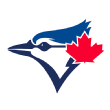 77. Nate Pearson, RHP, Toronto Blue Jays
77. Nate Pearson, RHP, Toronto Blue Jays
Age: 22 (8/20/96)
Bats: R | Throws: R
6-foot-6 | 245 pounds
Top level: High-A | 2018 rank: 100
Pearson's 2018 season might as well have never happened, since it ended after one start. Pearson came out of spring training with a sore intercostal muscle, returned for a single outing and took a comebacker off his elbow that broke his ulna and kept him out until the Arizona Fall League, where his results were mixed. Pearson throws an easy 100 mph from a big frame with good arm action, and he gets power on the slider up to 92 mph, although it's good because of its velocity rather than its shape or bite. His changeup is a clear third pitch, and he'll mix in a get-me-over curveball, as well.
He was extremely rusty when the AFL began after the long layoff; in the outing I saw, Pearson recorded just three outs and walked four guys. But by the end of the fall, he was throwing more strikes and had regained all of his previous velocity. His secondary stuff remains a work in progress, and he didn't make in-game adjustments very well in the fall, with scouts struggling to align his athleticism with his lack of body control in his bad starts. There's a huge range of potential outcomes here, from set-up man to frontline starter, but the upside is definitely in there.
 78. Oneil Cruz, SS, Pittsburgh Pirates
78. Oneil Cruz, SS, Pittsburgh Pirates
Age: 20 (10/4/98)
Bats: L | Throws: R
6-foot-6 | 175 pounds
Top level: A-ball | 2018 rank: Unranked
Cruz is a shortstop, but, I mean, he's not a shortstop -- and he might not be an infielder. If I had to guess on his eventual position, I'd say right field, although I think that's the end of a sequence of spots they'll try from short to third base to center field to right. This is all because Cruz has huge power, has a plus-plus arm and is at least 6-foot-6, probably an inch or two taller than that. Only one player 6-foot-6 or taller has ever played 100 games at second, third and/or short -- third baseman Ryan Minor, who played 101 games at third. So Cruz is bucking history with his height, but his enormous, grade-80 raw power and lean, athletic body would play well somewhere in the outfield. He is probably fast enough for center now, but he could fill out to the point that he has to go to right, where his absurd arm strength also will play up.
There's a fair amount of swing-and-miss to Cruz's approach, as his batting eye is fine but his swing gets very long, as you might imagine from someone roughly Aaron Judge's height. So, there's a bit of uncertainty around Cruz, from where he'll play to how much he'll hit. But the upside here -- 35 homers with some on-base skills and maybe even plus defense in an outfield corner -- would make him a potential 4-5 WAR regular.
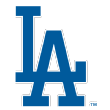 79. Will Smith, C, Los Angeles Dodgers
79. Will Smith, C, Los Angeles Dodgers
Age: 24 (3/28/95)
Bats: R | Throws: R
6-foot | 192 pounds
Top level: Triple-A | 2018 rank: Unranked
The Dodgers preach launch angle to their minor league prospects and have been known to tinker with many players' swings to attempt to optimize their power output, an approach that will work for some players but perhaps hurt some players' ability to hit. Smith looks like a great success story, as the Dodgers worked their magic with him and turned a below-average power guy who hit 11 homers in a full year in hitter-friendly Rancho Cucamonga into an above-average power guy who hit 20 in 98 games between Double- and Triple-A this past season. That's especially good news, because Smith already could do enough other things to make him a likely major league backup, at least, with a pretty good eye, plus receiving and framing, and a history of high caught-stealing rates.
The Dodgers let Yasmani Grandal walk as a free agent, and they have seemed disinclined to do much to replace him in the near term; Smith's emergence as a likely everyday catcher who also now has the potential to be a good bit better than that is probably the main reason why.
 80. Logan Allen, LHP, San Diego Padres
80. Logan Allen, LHP, San Diego Padres
Age: 22 (5/23/97)
Bats: R | Throws: L
6-foot-3 | 200 pounds
Top level: Triple-A | 2018 rank: 89
The Padres have so many famous prospects at this point that Allen often ends up a forgotten man in discussions of their system. But he is quite close to major-league-ready and has a higher floor than many better-known Padres kids because he's a left-handed pitcher with control and an assortment of weapons.
Allen has three solid-average or better pitches with a 90 to 94 mph fastball, mid-80s slider and a power changeup with good action in the low 80s, as well as a curveball that he doesn't use that much and that's clearly his fourth pitch. He is a solid athlete with a strong build, although there's a little effort to the delivery and some cross-body action as he comes to the plate, which concerns me that his command might never get up to above average. Even so, he keeps missing bats, doing so through Triple-A so far, and competes well with plus control. He should be at least a league-average starter for San Diego, with an ETA of sometime this summer.
 81. William Contreras, C, Atlanta Braves
81. William Contreras, C, Atlanta Braves
Age: 21 (12/24/97)
Bats: R | Throws: R
6-foot-0 | 180 pounds
Top level: High-A | 2018 rank: Unranked
Yes, this is Willson Contreras' little brother, who is a pretty good prospect in his own right and has emerged at a much younger age than Willson did. William Contreras has a lot in common with his older brother, from great athletic ability to strong bat-to-ball skills to a plus arm, performing very well as a 20-year-old in Rome last year with a .293/.360/.463 line before he was promoted to High-A.
William has a contact swing but not a power one, with no stride at all, just a heel-tap trigger, although his hands are so quick that he does make a lot of hard contact -- and still hit 11 homers last year. He is a better receiver than his brother is, as he has been a catcher since he signed, while Willson was converted there at age 20 and didn't catch full time until a year later. William seems to make a lot of the game look easy, from hitting to throwing to catching, and both his body and his work on the softer aspects of catching have areas for improvement. There's risk from his youth, but he also doesn't have far to go to project as an above-average regular behind the plate and maybe even a half-grade more.
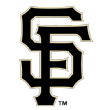 82. Joey Bart, C, San Francisco Giants
82. Joey Bart, C, San Francisco Giants
Age: 22 (12/15/96)
Bats: R | Throws: R
6-foot-3 | 220 pounds
Top level: Low-A | 2018 rank: Ineligible
Bart was the second overall pick in the 2018 draft and probably the safest choice the Giants could have made there with Casey Mize off the board, as Bart could probably be a backup catcher in the big leagues in 2020 without much development from this point. Bart is a premium defender at a position where we often ask premium defenders to just remember to take their bat to the plate, but he also has plus power that could translate to 20 to 25 homers a year.
His hands are soft and he blocks well, with a plus arm, or so I'm told, because no one ever ran on him when I saw him for Georgia Tech. At the plate, however, he is a power-over-hit guy with a lot of swing-and-miss potential, and I think he's going to struggle to hit .250 or post a .300 OBP without a significant change to his approach. That's always possible, and you can be a pretty valuable big leaguer as a great defensive catcher who hits 20 homers with a .290 OBP.
 83. Tony Santillan, RHP, Cincinnati Reds
83. Tony Santillan, RHP, Cincinnati Reds
Age: 22 (4/15/97)
Bats: R | Throws: R
6-foot-3 | 240 pounds
Top level: Double-A | 2018 rank: Unranked
I'm not sure any prospect's presence on this list surprises me more than Santillan's -- granted, I make the list, but forget that, I'm rolling -- given what he was as a high school senior, a kid with a golden arm and no idea where the ball was going. It might be apocryphal, but I had at least a couple of scouts tell me they saw Santillan walk seven batters in a high school game. I'd guess the number of guys who have done that and made the majors is pretty low, but Santillan is on track. He reached 99 mph in high school, and he pitched at 93 to 97 this year -- really pitched, now, rather than just pumping gas, with an average slider and fringy changeup, as well as a disposable curveball.
He is a thicker-bodied kid but moves well and has some natural athleticism, like David Wells, and there's some hope the slider and changeup will end up above-average pitches. Scouts were most impressed this year by his feel to mix his different pitches and land the secondary pitches for strikes when he needed to, even when his fastball command was erratic. It's an intriguing package, with No. 2 starter upside, probably settling in more as just an above-average starter who tantalizes you with the hope he'll become more.
 84. Ronaldo Hernandez, C, Tampa Bay Rays
84. Ronaldo Hernandez, C, Tampa Bay Rays
Age: 21 (11/11/97)
Bats: R | Throws: R
6-foot-1 | 185 pounds
Top level: A-ball | 2018 rank: Unranked
The Rays signed Hernandez in 2014 as an infielder but converted him behind the plate right away, taking advantage of his arm strength, seeing power potential there to make him an above-average regular if he took to the position. His full-season debut in 2018 couldn't have gone much better, as Hernandez broke out with 21 homers, finishing one off the league lead, with a nice 69 strikeouts in 449 PA, continuing to make contact in a brief AFL stint in November.
He is still very pull-oriented at the plate, hitting all of his homers to left and all but two of his doubles to left/left-center; and while his ability to get bat to ball is there, he needs to be more selective, especially with pitches out of the zone. Behind the plate, his catching has progressed to the point where scouts think he'll stay there, although he needs more work on receiving and blocking, with the arm already in place.
He has a high floor as a backup catcher with power, but there's potential here for an All-Star regular who controls the running game with 20-plus homers a year.
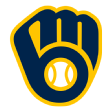 85. Zack Brown, RHP, Milwaukee Brewers
85. Zack Brown, RHP, Milwaukee Brewers
Age: 24 (12/15/94)
Bats: R | Throws: R
6-foot-1 | 180 pounds
Top level: Double-A | 2018 rank: Unranked
Corbin Burnes and Brandon Woodruff were both top-100 prospects for me and played huge roles in the Brewers' bullpen in 2018 before what will presumably be a transition to the rotation this spring. Brown looks set to follow in their footsteps after a breakout year with Double-A Biloxi. Drafted in the fifth round out of the University of Kentucky in 2016, Brown saw everything tick up last year. He is throwing 92 to 95 mph, working with a four- and a two-seamer, as well as a plus curveball, a changeup and a new slider that should give him a fourth (or fifth) average pitch.
He is very competitive, and he showed last year that he could command his stuff to both sides of the plate. He always has thrown strikes, but work with the Brewers' coaches got him to focus less on throwing hard and more on locating. I do hear mixed things on the fastball life, and there's some scout concern that he ultimately is a reliever, but the command and pitch mix point to at least a back-end starter -- and he's still improving.
 86. Griffin Canning, RHP, Los Angeles Angels
86. Griffin Canning, RHP, Los Angeles Angels
Age: 23 (5/11/96)
Bats: R | Throws: R
6-foot-1 | 170 pounds
Top level: Triple-A | 2018 rank: Unranked
Canning was a near-lock for a first-round pick in 2017 before his pre-draft medical reports reached teams, after which concerns about his arm -- reportedly both to his shoulder and elbow -- knocked him out of the first round completely. So, the Angels, who have been much more risk-tolerant under general manager Billy Eppler, were able to nab him in the second round. All Canning did in his first pro season was stay healthy ... and spend the second half of his year in Triple-A, to the point where they could project him to contribute in a significant way to their 2019 squad.
Canning is throwing even harder than he did in college, sitting at 93 to 94 mph, to which he adds a plus slider and both a curve and change that can range from above-average to plus. He always has been a strike thrower, even with effort to his delivery that might make it harder to repeat. Canning was worked very hard at UCLA, and there's still some higher-than-normal risk of an injury; but he has been fine since the Angels signed him, and there's really nothing they can do to mitigate past damage anyway. He should be a league-average starter right now, with No. 2 starter upside if he holds up physically.
 87. Austin Riley, 3B, Atlanta Braves
87. Austin Riley, 3B, Atlanta Braves
Age: 22 (4/2/97)
Bats: R | Throws: R
6-foot-3 | 220 pounds
Top level: Triple-A | 2018 rank: Unranked
When Riley was drafted by Atlanta, he was a two-way high school player in Mississippi whom many teams preferred on the mound. He was a bad defender at third with a "dumpy body" (according to one scout) who had raw power and a plus arm but swing-and-miss concerns. He is a completely different guy now, having worked very hard on his body and fielding to turn himself into a plus defender who also gets to his power consistently enough to project as at least a solid regular.
Riley does strike out often, a shade under 30 percent in Triple-A last year, as he is very strong with an improved eye but has just average bat speed. To his credit, however, he has started slow at lower levels and made adjustments as he has stayed at each one, eventually doing well enough to earn further promotions; and it would fit the pattern if he comes out hot this year in Triple-A and pushes Atlanta to call him up by June.
He has done a tremendous job remaking himself as a player since he wasn't even a top-100 draft prospect in his senior year, and now Atlanta seems to have its third baseman of the future.
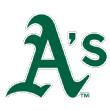 88. Sean Murphy, C, Oakland Athletics
88. Sean Murphy, C, Oakland Athletics
Age: 24 (10/10/94)
Bats: R | Throws: R
6-foot-3 | 215 pounds
Top level: Triple-A | 2018 rank: Unranked
Murphy has an 80-grade arm, 55 to 60 receiving skills and plus raw power. He could hit .220 and still be a decent big leaguer, given the current state of catching and the way teams value defense at the position.
The A's third-round pick in 2016 has worked around injuries, including a broken hamate, but when on the field, he has shown one of the best throwing arms on any catcher in the minors as well as much-improved skills behind the plate. It's a below-average hit tool, maybe well below average, and that limits his ceiling and provides some risk that maybe he just never hits enough to be more than a backup, although his eye and raw power seem to make that unlikely. If he even hits .250, he could get to 25-plus homers, and I think a conservative projection that has him hitting .230 with a .310 OBP and 15 homers would make him at least a regular, with the hope that he'll make enough hard contact for more.
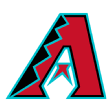 89. Daulton Varsho, C, Arizona Diamondbacks
89. Daulton Varsho, C, Arizona Diamondbacks
Age: 22 (7/2/96)
Bats: L | Throws: R
5-foot-10 | 190 pounds
Top level: High-A | 2018 rank: Unranked
Varsho was Arizona's second-round pick in 2017 and went right to High-A for his first full season -- and only a broken hamate bone could slow him down, as he hit .286/.363/.451 for Visalia, with 19 steals in 22 attempts. That stolen-base total led all minor league catchers, even though Varsho was limited to 83 games, and he stole more bases than all major league catchers who qualified for the batting title in 2018 had combined. He is an average receiver who blocks very well and frames adequately; his arm strength is fringe, but he gets rid of the ball very quickly.
Some scouts think Varsho will end up at another position, such as second base, either because they doubt his receiving skills or because they think his speed and athleticism is wasted behind the plate. I've ranked him here as if there's a good chance he stays at catcher, but it looks very much like his bat will make him an above-average regular somewhere, whether it's at catcher, second or somewhere else -- providing average, some very good on-base skills and 15 to 20 homers.
 90. Peter Alonso, 1B, New York Mets
90. Peter Alonso, 1B, New York Mets
Age: 24 (12/7/94)
Bats: R | Throws: R
6-foot-3 | 245 pounds
Top level: Triple-A | 2018 rank: Unranked
Alonso led the minors in home runs last year, bashing 36 between Double-A Binghamton and hitter-friendly Triple-A Las Vegas, and then tied for the AFL lead with six more. Alonso was more of a hitter for average who happened to have some power at the University of Florida, from which the Mets took him in the second round in 2016. But in pro ball, he has become more power-centric, even selling out sometimes to pull the ball. He also has become more vulnerable to velocity in on his hands as a result of his pull-happy approach, although his history suggests he can be more of an all-fields hitter without sacrificing all of that power.
Alonso has always been big, but he is large enough now that he's a 40-grade defender at first base, and I think there's a real chance he'll have to DH in the long term -- as do many scouts who saw him struggle on defense last season or in the Arizona Fall League. The Mets seem committed to playing him at first this year, and he seems likely to hit 20 to 25 homers even if he strikes out too often, with above-average upside if he can balance his approach between contact and power.
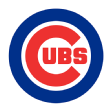 91. Miguel Amaya, C, Chicago Cubs
91. Miguel Amaya, C, Chicago Cubs
Age: 20 (3/9/99)
Bats: R | Throws: R
6-foot-1 | 185 pounds
Top level: A-ball | 2018 rank: Unranked
The lone Cub on the list or even particularly close to it, Amaya struggled as an 18-year-old in the advanced short-season Northwest League in 2017, putting up a .266 OBP. But another year of growth had him a different player in the full-season Midwest League, where he hit .256/.349/.403 and threw out 41 percent of opposing runners. Amaya is an offensive catcher, perhaps a future average defender with a plus arm, but a potential 55-grade hitter with average power and a solid idea of the strike zone. He has to continue to get stronger, if only for durability. He slugged .478 before the major league All-Star break but hit .198 with a .223 slugging percentage after it, which isn't surprising for a 19-year-old at a very demanding position, but it's a clear area for improvement.
Amaya has a very simple swing and approach, with a direct path to the ball, good balance through contact and enough loft for 15-plus-homer power, perhaps more if he gets stronger than expected. He will turn 20 in March, so there's risk here, but right now, he looks like a solid everyday catcher with a high floor as a quality backup.
 92. Peter Lambert, RHP, Colorado Rockies
92. Peter Lambert, RHP, Colorado Rockies
Age: 22 (4/18/97)
Bats: R | Throws: R
6-foot-2 | 185 pounds
Top level: Triple-A | 2018 rank: 63
Lambert was the Rockies' second-round pick in 2015 out of a California high school, valued more for his athletic ability and projection than the sense that he was going to move quickly. But that's just what he has done, reaching Triple-A last year at age 21. Lambert's flaw as a prospect is the lack of a plus pitch, but he throws a ton of strikes with four weapons -- a solid-average fastball that will touch 94 to 95 mph, in addition to a well above-average changeup and an average curve and slider. He just doesn't walk guys -- 101 in his pro career across 447⅔ innings (5.5 percent of batters faced) -- and he repeats his simple delivery well, coming from a high three-quarters slot that adds some deception. His stride could be a little longer, and he has to avoid spinning off his front heel or risk losing some of that plus control.
He looks like a fourth starter, someone who could quietly be league average for a while, although I still hold out hope he'll find another half-grade or more of velocity before he peaks.
 93. Kristian Robinson, OF, Arizona Diamondbacks
93. Kristian Robinson, OF, Arizona Diamondbacks
Age: 18 (12/11/00)
Bats: R | Throws: R
6-foot-3 | 190 pounds
Top level: Rookie | 2018 rank: Unranked
Like Jazz Chisholm, Robinson is a Bahamian prospect, one of the heads of the wave of prospects from that country speeding toward the majors who might make it the next great hotbed for international talent. Robinson signed with Arizona for $2.5 million in 2017, the second-highest bonus ever given to a Bahamian prospect (after Lucius Fox, now with the Rays), and earned raves in his debut in 2018 for his combination of elite tools, size and unexpected polish. He is a plus runner with big raw power now and future plus game power, showing the speed for center field and great instincts, although a fringy arm and his potential size might push him to left. At the plate, he has very strong hands and a quiet approach, but he generates a lot of force when he does swing and drives the ball well to left and center.
He also impressed with his hitting plan at the plate, both his ability to recognize pitches and the sense that he had a game plan in place for certain pitchers -- all exceptional for a 17-year-old. And he performed, even raking in a three-week promotion to the Pioneer League at the end of the summer. He might move up faster than expected given how polished he seems to be at the plate, and he has 25/25 homer/steal upside with real OBP skills that would play even if he does have to move to left.
 94. Shane Baz, RHP, Tampa Bay Rays
94. Shane Baz, RHP, Tampa Bay Rays
Age: 20 (6/17/99)
Bats: R | Throws: R
6-foot-3 | 190 pounds
Top level: Rookie | 2018 rank: 65
Baz was the player to be named in the Chris Archer trade but also was the most valuable player coming back to Tampa Bay from Pittsburgh, with substantial upside that doesn't require physical projection but on-field development. Baz works with a plus fastball and slider, sitting at 92 to 95 mph, touching 98 in high school, and he has an above-average changeup and a curveball that isn't far behind.
He is very well put together physically with a great frame that already is filling out, and he has strength in his lower half that he needs to learn to use more effectively for durability and command. He still is learning to harness his stuff, to throw more and better strikes, and to make better use of the weapons he already has. So we can talk about No. 1 starter upside just based on the present arsenal and physical package, but his range of outcomes remains very wide until he starts to make that progress with command and control.
 95. Hans Crouse, RHP, Texas Rangers
95. Hans Crouse, RHP, Texas Rangers
Age: 20 (9/15/98)
Bats: L | Throws: R
6-foot-4 | 180 pounds
Top level: A-ball | 2018 rank: Unranked
Crouse is unusual among starter prospects in the minors, as he makes a relieverlike delivery work for him and shows feel for pitching atypical for someone who pitches (or at least looks like he pitches) with a reliever's hard-harder-hardest mentality. Crouse works in the mid-90s, touching 97 to 98 mph, and is unafraid to attack hitters in the zone with the pitch, pairing it with a plus slider that is a swing-and-miss offering. His changeup is a work in progress, a pitch the Rangers have made a developmental focus for him, but it still lags behind the other two pitches. He killed right-handed batters last year, with a 31 percent strikeout rate, but had a significant platoon split of nearly 200 points of OPS.
Crouse's delivery looks manic and high-effort. He earns comparisons to a young Max Scherzer, who pitched the same way and with the same "I'm going to get you, kill you and desecrate your grave" affect on the mound, which makes everyone want to consign Crouse to the bullpen. And yet so far, he holds his stuff and throws plenty of strikes to stay in the rotation. It will probably come down to the changeup, as well as the obvious issue of arm health, but if that third pitch comes, he looks like the type of pitcher who will succeed as a mid-rotation starter.
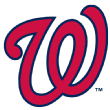 96. Mason Denaburg, RHP, Washington Nationals
96. Mason Denaburg, RHP, Washington Nationals
Age: 19 (8/9/99)
Bats: R | Throws: R
6-foot-4 | 195 pounds
Top level: Has yet to play | 2018 rank: Ineligible
Denaburg came out of the chute hot last spring and at one point seemed like he might be the best high school right-hander in the draft class; but his shoulder came up tender after a much-attended game against right-hander Carter Stewart (now at Eastern Florida State College). Denaburg came back after almost two months off and looked as good as ever, carrying that success through the summer into instructs.
Denaburg works with a plus fastball up to 97 mph that has huge run to it, the kind that should break a lot of bats, and pairs it with an above-average curveball that some folks project to plus and a solid-average changeup. He is a good athlete who can swing the bat some as well and has a little projection left on his frame, more for durability than for any hope of more velocity at this point, as he already has three pitches in place with plenty of heat on the fastball. There's risk here from the injury scare to his age to the lack of any pro experience to date, but if he's completely healthy now after a summer off, the Nats might have nabbed a top-10 talent who has No. 2 starter upside.
 97. Andres Gimenez, SS, New York Mets
97. Andres Gimenez, SS, New York Mets
Age: 20 (9/4/98)
Bats: L | Throws: R
5-foot-11 | 161 pounds
Top level: Double-A | 2018 rank: Unranked
Gimenez has performed well as a teenager in full-season ball over the past two years, which helps him grade out well in projection systems that (appropriately) weigh age relative to level, but he doesn't have the sort of offensive upside that most players this young would have. He is a solid 60-grade defender at shortstop, enough that he'll likely have a long major league career no matter what he does with the stick. At the plate, however, he doesn't project to have much impact -- at the very least, he has to get a lot stronger, and he doesn't have the body or swing to ever be a big power guy. His secret weapon is his baserunning.
He is an average to above-average runner, and his 38 steals put him in the top 20 in all of minor league baseball last year, with instincts that should help him improve his success rate going forward. He could be a regular for some teams or a utility infielder on playoff clubs; either way, he could play a long time in the majors, with peak seasons in which he hits .280/.340/.380 with 10 homers and 40 steals.
 98. Carter Kieboom, SS/2B, Washington Nationals
98. Carter Kieboom, SS/2B, Washington Nationals
Age: 21 (9/3/97)
Bats: R | Throws: R
6-foot-2 | 190 pounds
Top level: Double-A | 2018 rank: Unranked
Kieboom seems close to ready for a major league job, and the Nats appear to agree, having signed Brian Dozier to a one-year deal to fill the gap at second base while refusing to part with Kieboom in trades for the last year. He is probably a solid-average regular at second in the long run, although there's some possibility of more depending on how much he hits for average. Kieboom is a shortstop now but is a 45-grade defender there, lacking the speed or range to stay at that spot; while his hands are very good and he should be no worse than a 55 defender at second, although he needs work on the double play there. At the plate, he got off to a horrible start in 2018 in High-A, but then went on a tear in May and June to earn a promotion to Double-A before a strong showing in the Arizona Fall League.
Kieboom doesn't show much game power but takes a big cut at the ball without the sort of swing-and-miss you would expect from that kind of swing. His plate discipline has been surprisingly inconsistent across the many times I've seen him, less pitch recognition than swing decisions, especially when pitchers would expand the zone on him. He got ground ball-heavy early in 2018 but worked his way out of it and restored his swing to be more of a line-drive guy, which I think is ultimately his profile. The hope here is that he ends up with a 60 hit tool and 50 power at second base with some walks, a .300 average/.375 on-base type with 15 to 20 homers, which would make him a star. The most likely outcome is that he's a solid-average regular for a long time and has a year or two that still put him into that star category.
 99. Ronny Mauricio, SS, New York Mets
99. Ronny Mauricio, SS, New York Mets
Age: 18 (4/4/01)
Bats: S | Throws: R
6-foot-3 | 166 pounds
Top level: Rookie | 2018 rank: Unranked
The Mets are really loaded with shortstop prospects, which is a very good area in which to have a lot of depth. Luis Guillorme is probably an 80-grade defender, just without much offense to speak of. Sherwyn Newton, a Dutch prospect with big tools and a crude approach at the plate, is a 65 defender, perhaps a future 70, with more upside with the stick. Mauricio has the best balance across the board of tools and skills, having both offensive and defensive upside, and thus the best chance of the group to become a star.
Mauricio is a switch-hitter who projects to hit for average and power, with a lean, wiry body that is still highly projectable. He showed an ability to make contact beyond what most 17-year-olds can do in short-season ball. (However, after his 1 for 7 performance last summer, perhaps stealing bases won't be part of his game.) His hands are loose and easy at the plate, and he has the kind of quick actions in the field you would expect from a fast-twitch athlete, such as on the transfer to his throwing hand. He signed for $2.1 million in 2017, the largest bonus the Mets had ever given an amateur player to that point, and the early returns are really strong, with All-Star upside and a path that could get him to the majors by 2022.
 100. Lucius Fox, SS, Tampa Bay Rays
100. Lucius Fox, SS, Tampa Bay Rays
Age: 21 (7/2/97)
Bats: S | Throws: R
6-foot-1 | 180 pounds
Top level: Double-A | 2018 rank: Unranked
Fox needed to get stronger, and he did, to the point where we're talking less about potential and more about the present skills, and I can see him as the long-term shortstop solution the Rays have lacked since the franchise started. Fox signed with the Giants in 2015 as an international free agent, having moved to the Bahamas to avoid the draft and make more money, then went to Tampa Bay a year later in the Matt Moore trade.
Fox was still underdeveloped even at the time of the trade, but he has begun to fill out physically, enough that he is making some better quality contact even as he moves up to face better pitching. He always has been an above-average defender at short with great hands and a 60-grade arm, and he is a plus-plus runner with a 75 percent career success rate in pro ball. The question on Fox is whether he'll have any power at all; I think he is a guy who will hit 30 to 35 doubles and eight to 10 homers, with high contact rates to keep his average and OBP high. Double-A pitching will be a good test to see if he can handle good velocity from pitchers who can locate it better.
